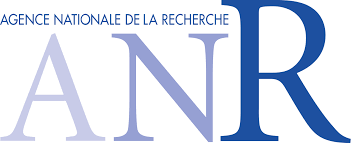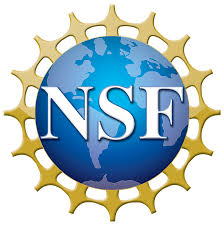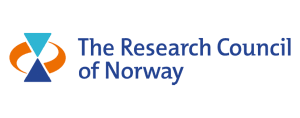The project entitled “From Nunavik to Iceland: Climate, Human and Culture through time across the coastal (sub)Arctic North Atlantic” (NICH-Arctic) provides the opportunity for setting a unique research network for transdisciplinary integration of climate-related data.
The overarching goal of NICH-Arctic is to explore and assess the resilience and vulnerability of the environment in a subpolar latitudinal zone marked by large amplitude climate and sea-ice variations. This project will combine geological, historical, instrumental records and narrative information from the cultural practices and the representations of Nordic environments through the literature. The proposal has been built upon the experience of the applicants and co-applicants from previous or ongoing international and multidisciplinary collaborations in the study areas, with emphasis on changes in natural and human ecosystems through time, from the past millennia to modern days. NICH-Arctic proposes investigations of coastal regions where climate conditions and sea ice play a vital role in accessibility through navigation and livelihood of the cultural communities.
From West to East, the study regions include the Nunavik in northern Québec, Labrador, southwest Greenland and northern Iceland. The succession of different cultures, including Paleo-Eskimo (Saqqaq, Pre-Dorset and Dorset) and Neo-Eskimo (Inuit), in Nunavik, Labrador and Greenland, and the Norse settlers, in Iceland and Greenland, illustrates a wide range of adaptative strategies to harsh weather conditions, climatic variations, ocean and sea-ice instabilities and ecological stresses since early migrations via Alaska about 4500 years ago and the Nordic Seas in the 9th to 10th centuries. The recent evolution of these regions is not well documented from instrumental data, due to the low density of recording stations and the shortness of records, when available.
Disciplinary knowledge has been developed, but with little transdisciplinary exchanges and limited communication between scientists and stakeholders. Here, NICH-Arctic will take advantage of the large array of disciplinary expertise of the team members, added to their knowledge of the research areas, to develop a truly integrated multidisciplinary understanding of climate, habitat, archeology and culture relations, from past to on-going changes in the Arctic and subarctic Atlantic realm.
NICH-Arctic is developed around three foci: (i) natural variability of sea ice, climate and vegetation, (ii) adaptation of local human populations to their habitat and (iii) cultural representation and perceptions of the natural environments by local and outside-of-the-region populations. It is organized in distinct tasks to be undertaken within 5 work packages (WPs). WP1 consists in data gathering from historical, archeological, marine, lacustrine, narrative, and instrumental archives; WP2 concerns climate changes on land and at sea and their impacts on the biosphere; WP3, the human habitat from prehistoric to modern time; WP4, the cultural images and perceptions of climate and environmental changes. WP5 is dedicated to data integration and outreach. While the two first WPs will serve as basis for the climatic and environmental issues to be addressed in the project, WP3 will investigate linkages between climate changes and human ecosystems, and WP4 will permit to bridge “realities” and “perceptions”. WP5 will first aim at providing an integrative picture of the (sub)Arctic North Atlantic from objectively analyzed climate and paleoclimate data, to human perception of climate et environmental changes. It will also address the central issue of relationships between climate variations, extreme events and cultural changes, including population movements, vulnerability of communities and artistic representations.
The stakeholder implications in the NICH-Arctic project are of several types. The Avataq Cultural Institute, which is the Inuit cultural organization of Nunavik, will collaborate closely as the project includes the documenting of the long-term climatic and ecological history of the northern Nunavik coasts, where it is intended to propose a UNESCO heritage site. The Greenland Institute of Natural Resources will also collaborate with insights and advice on Greenland study areas, with the motivation to foster international collaboration for documenting the natural environmental variability of coastal environments. Neotoma, an organization aiming at the archiving of data documenting biodiversity and ecological changes through time, will provide help for data management. The collaboration with the Editor of the book series “Droit au Pôle”, which is translated in several languages, is an asset for data diffusion towards the general public, including the northern communities. Collaboration with other stakeholders from Labrador organizations interested by climate changes is currently being discussed.
Targeted impacts/outcomes for the NICH-Arctic project include:
(i) the setting of a welldocumented database of climate and ecological changes in the study area to be archived on open access databases;
(ii) an integrated documentation of climate, environmental and cultural variations over decades to millennia required for understanding and modelling the impact of climate changes in Northern regions
(iii) an evaluation of the instabilities and resilience of environmental conditions and cultures in relation with large amplitude climate shifts and extreme events
(iv) a series of workshops and conferences involving researchers and members from Nordic communities
(v) the dissemination of knowledge to the scientific community (publications in peerreviewed journals, MSc and PhD theses, communications in conferences, etc.) as well as to the general public, including local governments (executive summaries of major results and of their significance with respect to on-gong environmental changes), and Nordic populations at large (translation, publication of books and articles, website and videos, etc.)
Among the outcomes, the documenting of the pre-Anthropocene natural state of the environment and intrinsic climate variability will be beneficial to the society and the elaboration of policies for further territory development.






